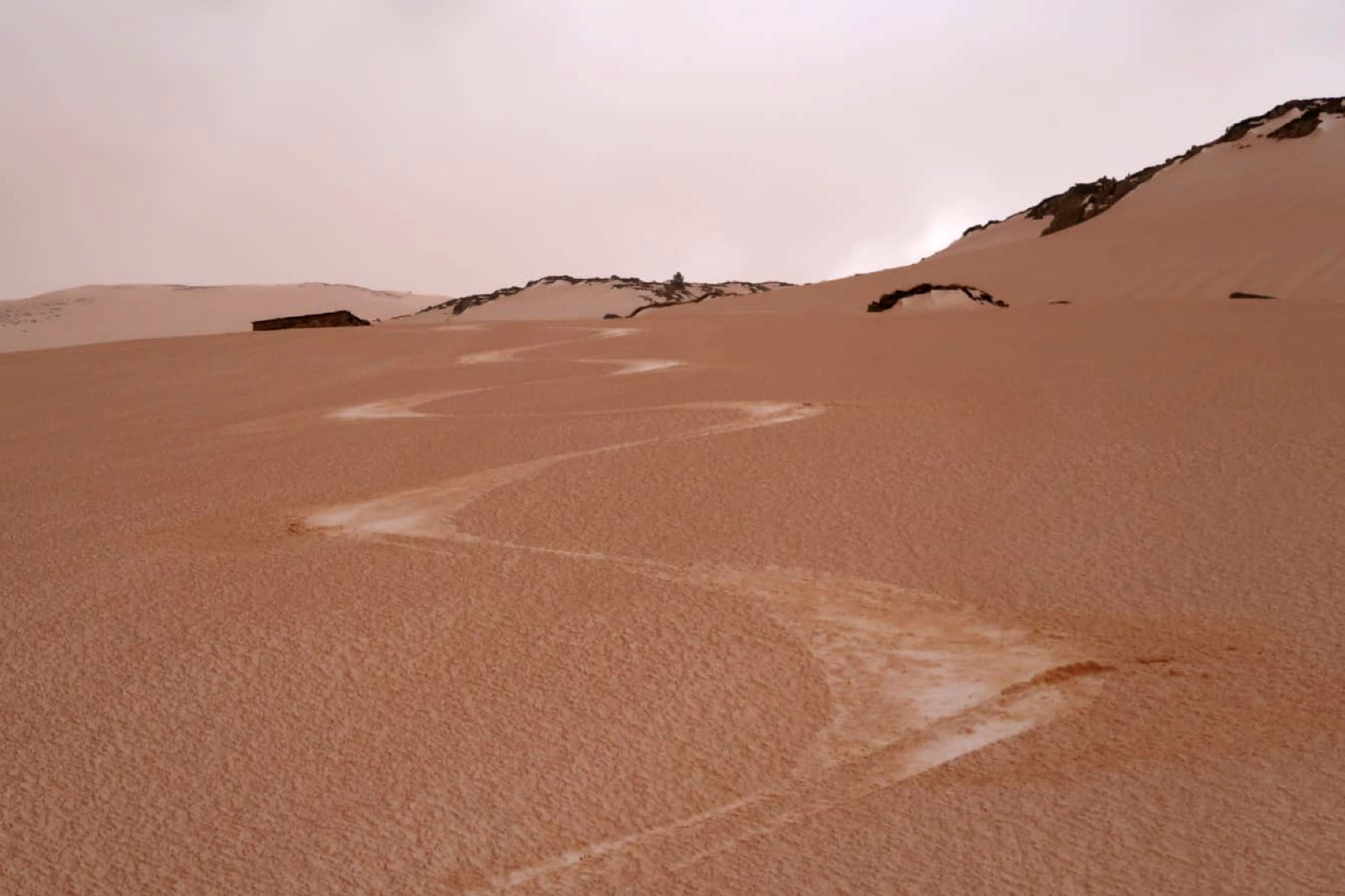
Marie Dumont’s journey into snow research was inspired by her upbringing in the French Alps, surrounded by the great outdoors. At the age of 16 years, a Mont Blanc expedition with her father became a defining moment. Following this experience, she knew that she had two options for her future career: becoming a mountain guide or a researcher. Opting for the latter, she combined her passion for the mountains with a commitment to scientific exploration.
Dumont’s ERC project IVORI kicked off in 2021 with a remarkable start. A few weeks into the project, a spectacular event unfolded when a Saharan dust deposition turned both the sky and the Alps’ snow orange. Seizing this occasion for applied research and citizen science, Dumont and her team gathered the community to collect samples of snow and dust. Subsequently, they then used this event for a communication campaign, discussing the reasons behind the orange snow, and its implications for snow evolution.
Snow can be very different across the world due to different climatic conditions; for instance, Alpine snow differs from Arctic snow, says Dumont. ”Unfortunately, existing numerical models explaining snow are biased towards Alpine snow, and thus unable to represent other types, especially Arctic snow, which covers a very large area and is fundamental for climate evolution. IVORI addresses this gap by pioneering a more universal vision of snow, based on our current knowledge of snow physics, and incorporating high-resolution measurements from different places of the world to capture the diversity of the snow cover on Earth.”
Porous material
But what precisely is snow? According to Dumont, snow is far more than just a blanket of white. “Snow is a complex network of snowflakes forming a microstructure - a 3D arrangement of ice and air that eventually connects to create a porous material. At the microscale, the way air and ice are arranged determines the various properties of snow, such as its mechanical traits (if it will be easy to trigger an avalanche or not), its thermal characteristics (how much insulating it is), and even its colour palette.”
“Snow can have different shades of white, and can also be orange, pink, red, sometimes even green, depending on the presence of coloured particles, such as living organisms, snow algae or inert particles coming from the air, Dumont adds “Common particles include black carbon from fossil fuels combustion and mineral dust from local or long-range transport.
As temperatures come into play, snow undergoes changes, becoming coarser, and less white. This change increases light absorption and a faster melting rate, setting off a butterfly effect that resonates in Earth’s climate. “
Snow as insulator
Snow is important for the Earth’s climate system, as Dumont explains. "Its white colour reflects light, limiting temperature rise. Additionally, snow contains a lot of air, sometimes even more than 90%, making it a very good insulator – about 10 times more effective than concrete. This quality makes snow useful for building igloos, shelters for animals, and supporting winter agriculture and crops.
Furthermore, snow plays a large role in the economies of many mountainous regions, contributing to winter sports and tourism. This not only boots local finances but also fosters a sense of community and cultural identity. Moreover, snow serves as a vital habitat, especially important for native populations requiring swift adaptation as snow and ice disappear faster. Protecting these environments is crucial for preserving biodiversity and supporting the communities that depend on them.”
More accurate predictions
Halfway through their project, Marie Dumont and her team have developed a prototype for a new way to model snow. Collaborating closely with Laboratoire Paul Painlevé at the University of Lille, they used advanced applied mathematics. “This model allows for a better understanding of snow and climate interactions, and significantly improves predictions relevant for people who live in the Arctic, but also for other mountain areas”, Dumont says. “Its applications are useful, for example, in infrastructures and road management, as well as the accurate prediction of avalanches hazards. On a global scale, this model leads to more accurate predictions of the future evolution of temperature and its broader impact on our planet. “
The team is currently on a field campaign to observe the evolution of the snow microstructure for a whole winter season in the Arctic. They are integrating this data into the model prototype and comparing it with existing data from the Alps and the Arctic. The team is also getting ready for another expedition to Antarctica and planning a special research project about algae and their colours.
Different kind of lab
In the IVORI project is hosted by Météo-France, the French national meteorological service. This is a different work environment than the usual academic lab: Dumont’s research directly influences operational services, and for instance helps forecasters predict snow and meteorological conditions. Dumont, as the first ever ERC grantee of Météo-France, encourages researchers in technical or applied fields to pursue ERC grants. “I worked pretty well for me!” she says. As science communication is an important element of the project, the team passionately engages both experts and general audiences, not just for sharing results but also educating them about the environment and climate change.
Biography
Dr Marie Dumont is a snow scientist and director of the Snow Research Centre (Centre d’Etudes de la Neige, CEN) in the Centre National de Recherches Meteorologiques (Météo-France & CNRS). Her research focuses on remote sensing and observations of optical snow properties and uses a range of methods including data assimilation of observations into models and laboratory work. In 2019, she was awarded the Arne Richter Award for Outstanding Early Career Scientists (European Geoscience Union) and Early Career Scientist Awards of the International Union of Geodesy and Geophysics (IUGG).





